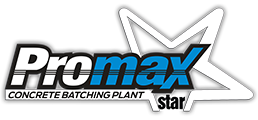Cement is an ingredient of which raw materials are limestone and clay and which is used in sticking mineral particles(sand, gravel, brick, briquette etc.). Cement definitely needs water for fulling this sticking task. Cement is a binder that hardens by reacting with water. Crushed limestone is ground and powdered with the addition of clay and if necessary, iron ore and/or sand. This ingredient kilned in rotary furnaces at 1400-1500°C. The arising product is called “clinker”.Then, an amount of gypsum(around 4-5%) is added to clinker and Portland Cement is obtained by powderizing it. In admixture cement production, apart from clinker and gypsum; one or more of trass, blast furnace slag, fly ash, silica fume etc. are added according to the cement type. Cement is the component that has the lowest volume in many concrete mixtures, however, it is the most important one among concrete ingredients.
The most commonly used cement types are Portland Composite Cement, Admixture Cement, Slag Cement, and Sulphate-Resistant Cement. Apart from these, White Portland Cement and some other cement types are also used with specific purposes.
Becayse aggregate oartşckes are the strongest agents in normal concrete, other two agents(cement paste and adherence) determines the strength. Strength of the cement paste is determined by water/cement ratio to a large extent.
Cement types used in concrete and their conformity evaluation have been standardized in TS EN 197 series.













